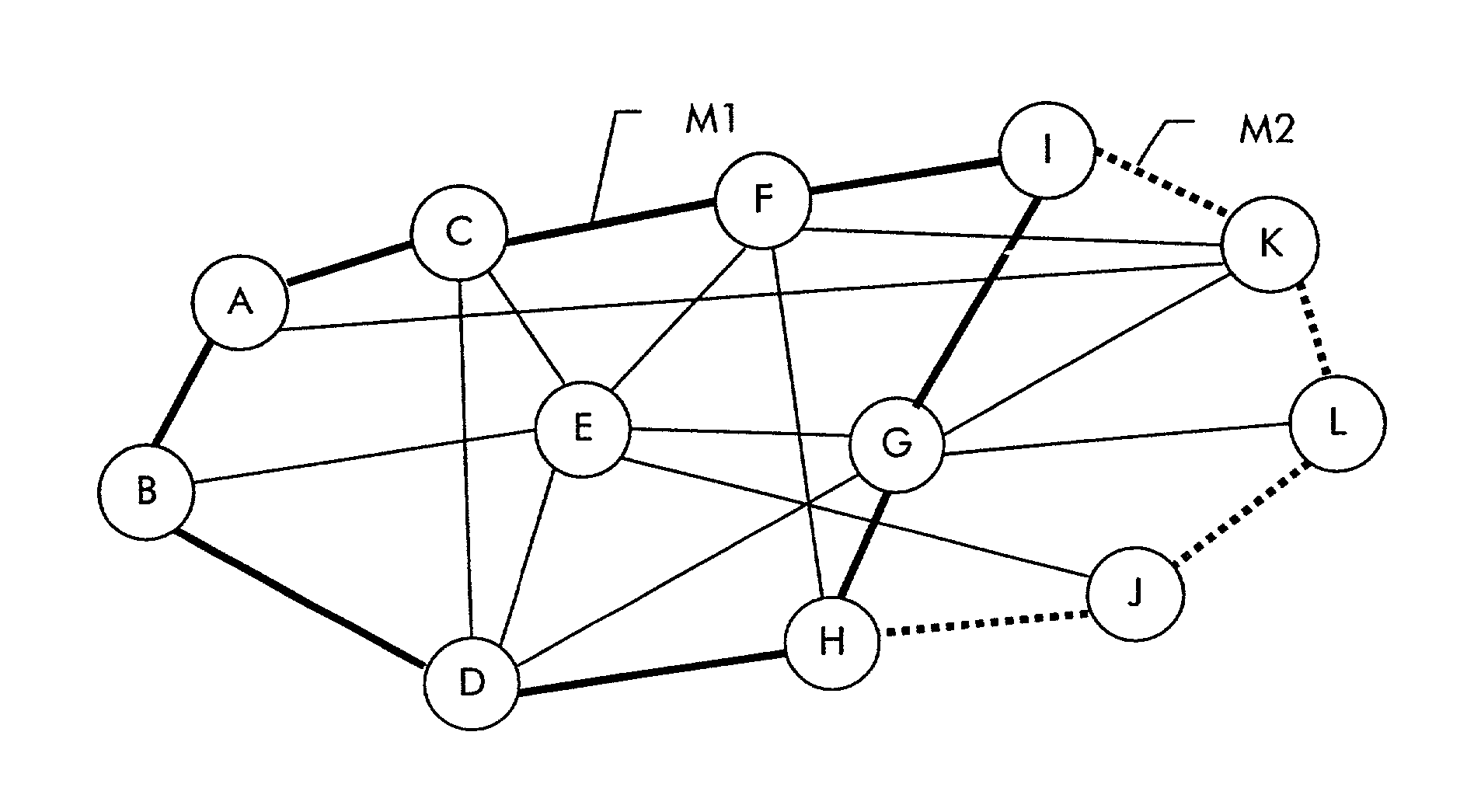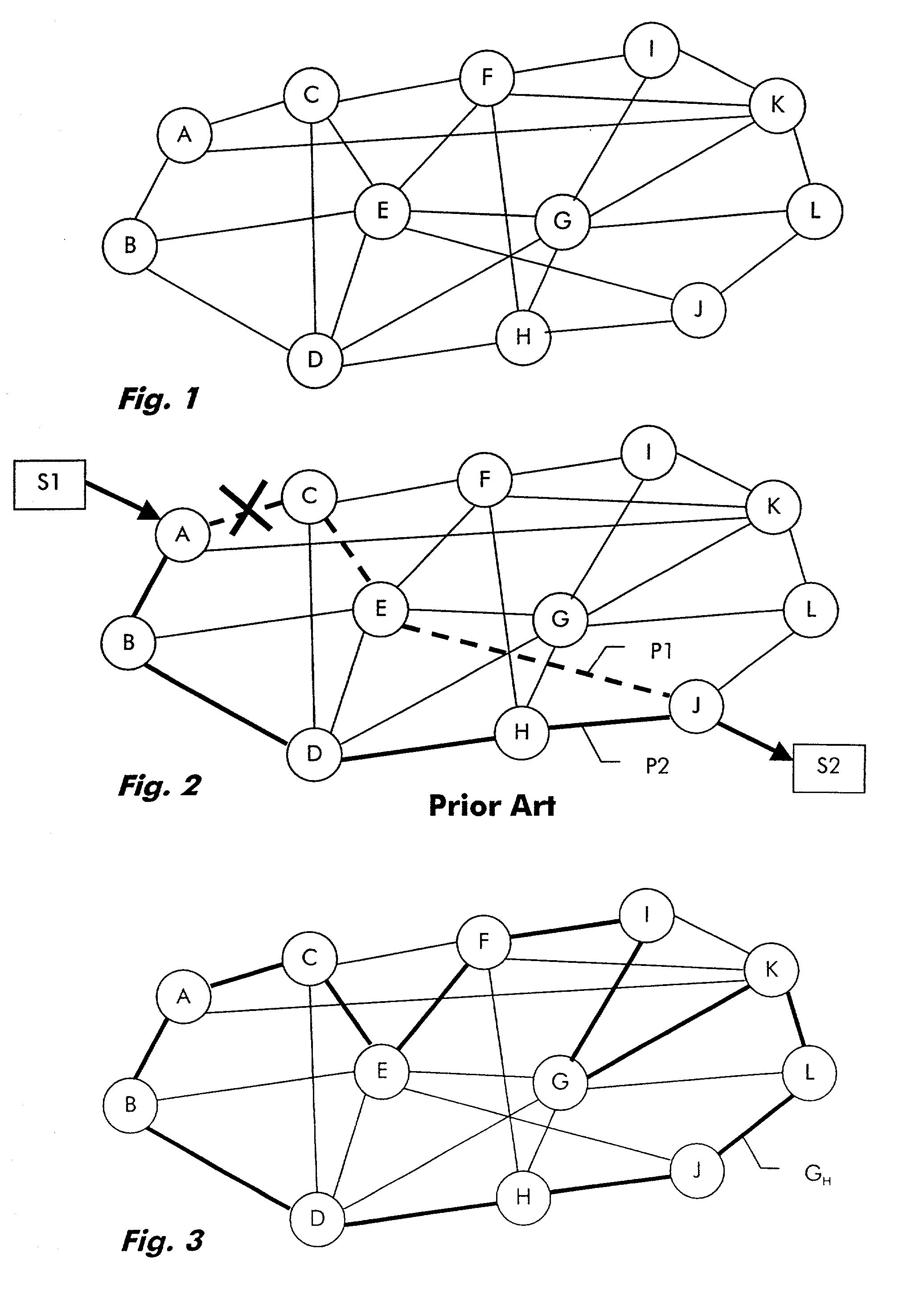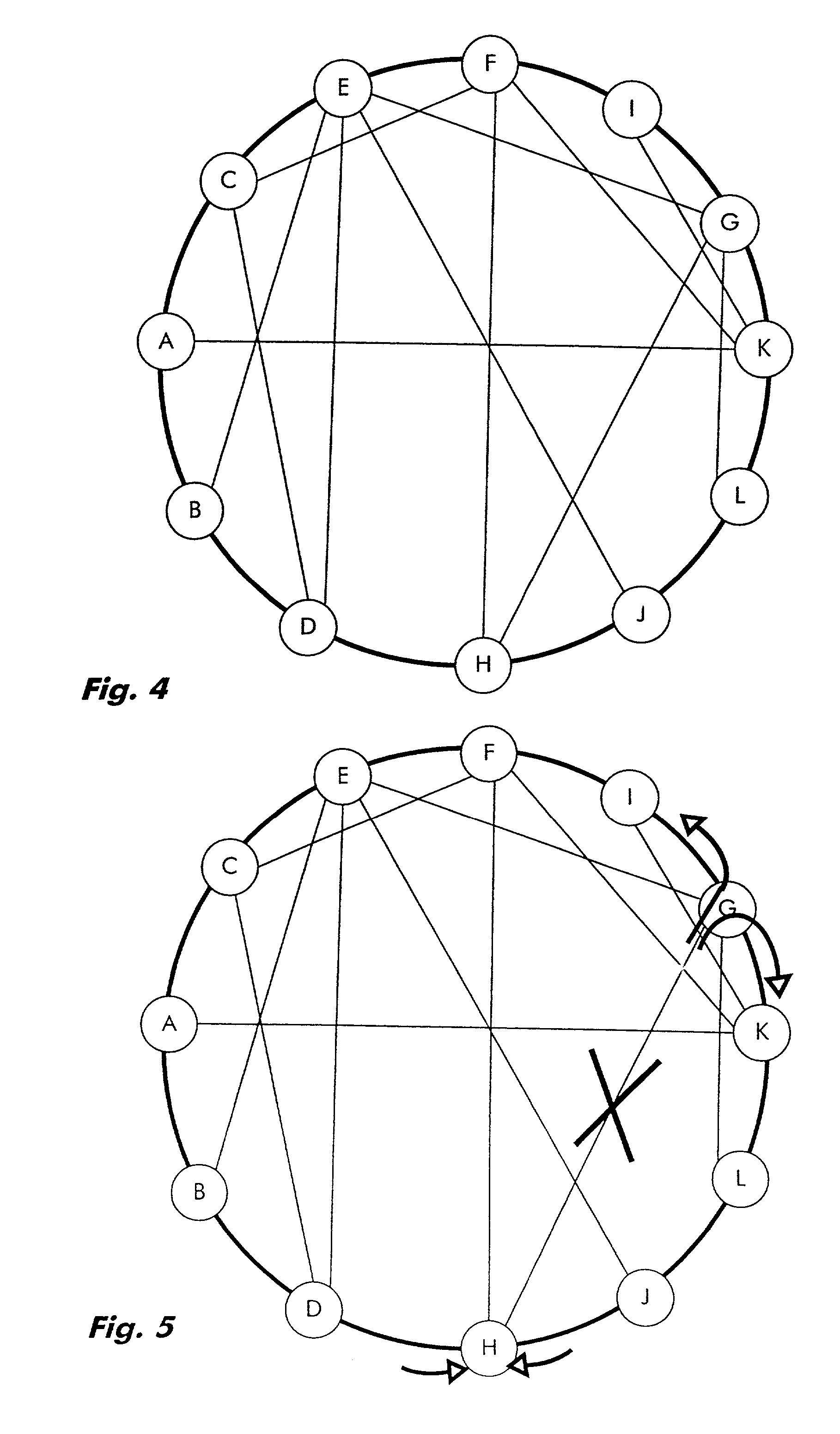Fast restoration mechanism and method of determining minimum restoration capacity in a transmission networks
a transmission network and fast restoration technology, applied in the field of fast restoration mechanisms and methods of determining the minimum restoration capacity of a transmission network, can solve the problems of inability or prohibitive in terms of cost in transmission networks, mechanisms are more stringent,
- Summary
- Abstract
- Description
- Claims
- Application Information
AI Technical Summary
Benefits of technology
Problems solved by technology
Method used
Image
Examples
first embodiment
[0048]In a first embodiment, it is assumed that the capacity offered by the network is fully needed to satisfy traffic requirements. Furthermore, it is assumed that for restoration purpose existing links, i.e. cables or cable ducts are extended with the means to provide this additional capacity, i.e. if a cable or cable duct is cut the restoration capacity assigned to this cable or cable duct is cut as well. Hence, the question to be answered is how much additional capacity is at least needed to ensure that traffic can be restored.
[0049]In this first embodiment of the present invention, the network G=(V, A) is extended with spare capacity by doubling the capacity of any arcs of the Hamiltonian mesh. The capacity thus augmented defines the restoration capacity. The network is now restorable in the event of any possible failure. Under the assumption made above that the non-augmented capacity is fully required to satisfy traffic requirements, this configuration provides also the minimu...
second embodiment
[0051]A second embodiment starts from the assumption that some of the capacity provided by the network G=(V, A) can be assigned for restoration purposes. Furthermore, it is assumed that if a cable or cable duct is cut the restoration capacity assigned to this cable or cable duct is cut as well. Hence, the question to be answered is how much capacity is at least to be reserved to ensure that traffic can be restored if one link fails.
[0052]The minimum restoration capacity in this second embodiment is found according to the invention by (step 1:) constructing a Hamiltonian mesh Gh=(V, Ah) and (step 2:) reserving half of the capacity of each link of the Hamiltonian mesh as restoration capacity.
[0053]Obviously, the traffic in each arc of the Hamiltonian mesh can be restored. Further, all other arcs can be restored since half of the traffic can be routed clockwise and the other half of the traffic counter-clockwise through the Hamiltonian mesh. Furthermore, since any arc failure results i...
case 1
[0055]Restoration of the network in case of a single link failure is performed according to the following algorithm:[0056] If the failed link is element of the Hamiltonian mesh re-route all failed traffic along the other links of the Hamiltonian mesh.[0057]Case 2: If the failed link is not in the Hamiltonian mesh re-route half of the failed traffic clockwise through the reserved capacity of the Hamiltonian mesh links and the other half counter-clockwise.
[0058]Using the network representation of FIG. 4, restoration of a failure is shown schematically in FIG. 5. In this example, intersecting link H-G is cut and traffic from G to H needs to be restored. Since half of the capacity of the Hamiltonian mesh is reserved for protection, node G splits traffic destined for node H into two portions of equal size and transmits one portion clockwise and the other portion counter-clockwise around the Hamiltonian mesh. Restoration of the reverse direction from H to G is done accordingly (not shown)...
PUM
 Login to View More
Login to View More Abstract
Description
Claims
Application Information
 Login to View More
Login to View More - R&D
- Intellectual Property
- Life Sciences
- Materials
- Tech Scout
- Unparalleled Data Quality
- Higher Quality Content
- 60% Fewer Hallucinations
Browse by: Latest US Patents, China's latest patents, Technical Efficacy Thesaurus, Application Domain, Technology Topic, Popular Technical Reports.
© 2025 PatSnap. All rights reserved.Legal|Privacy policy|Modern Slavery Act Transparency Statement|Sitemap|About US| Contact US: help@patsnap.com



